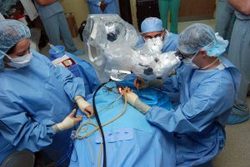
Imagine entering a hospital for a minor surgical procedure and contracting a potentially fatal infection. With the increase in the antibiotic resistant microbes and the prevalence of hospital-associated infections (HAI), that’s exactly the risk many Illinois hospital patients face.
In the most comprehensive study of the problem, the Centers for Disease Control and Prevention (CDC), reported that almost 722,000 hospitalized patients contracted a hospital-associated infection during the year. Of these, 75,000 patients died as a result of the infection.
For Illinois residents, there is mixed news. On average, Illinois hospitals have lower standardized infection ratios* (SIR) than the national baseline. However, some hospitals have higher SIR than the national baseline. Between 2013 and 2014 (the latest period for which CDC has collected and published data), SIR for the six major types of HAI in Illinois hospitals changed as follows:
- Central line-associated bloodstream infections (CLABSI) – Down 9 percent.
- Catheter-associated urinary tract infections (CAUTI) – Down 10 percent.
- Surgical site infections (SSI) following colon surgery – Up 9 percent.
- Surgical site infections (SSI) following abdominal hysterectomy – Up 28 percent.
- Hospital-onset methicillin-resistant Staphylococcus aureus (MRSA) bacteremia – Up <1 percent.
- Hospital-onset Clostridium difficile infection (CDI), facility-wide – Up 11 percent.
The Illinois Legislature, the Illinois Department of Public Health, CDC, and individual hospitals have taken measures to address the HAI problem. For example, Illinois hospitals are required to report the incidence of HAI to the CDC’s National Healthcare Safety Network. In 2007, the state enacted legislation requiring hospitals to test all high-risk patients for MRSA upon admission and to isolate infected patients. Hospitals have implemented new procedures designed to reduce possible risks.
But judging from the most recent results, it’s clear that much work still needs to be done by hospitals and government agencies to lower the incidence of HAI.
*SIR can be used to track infection rates over time. To calculate SIR, the incidence of HAI is adjusted to account for factors such as hospital size, teaching status, the type of patients a hospital serves, and surgery and patient characteristics.

